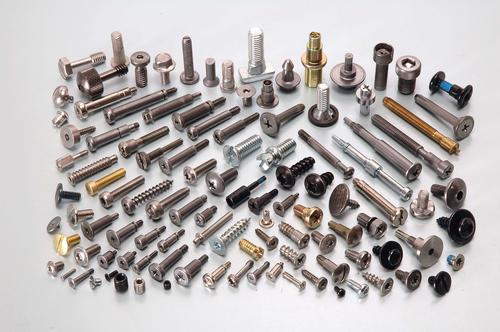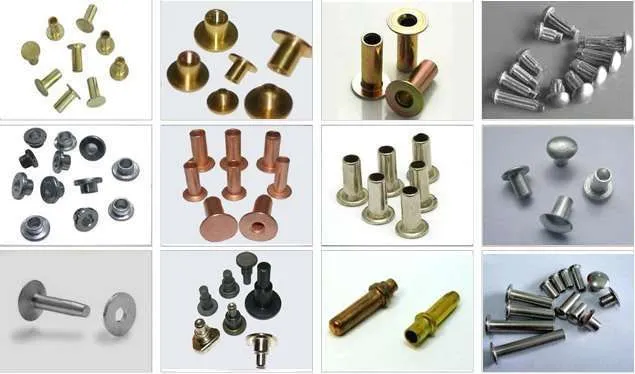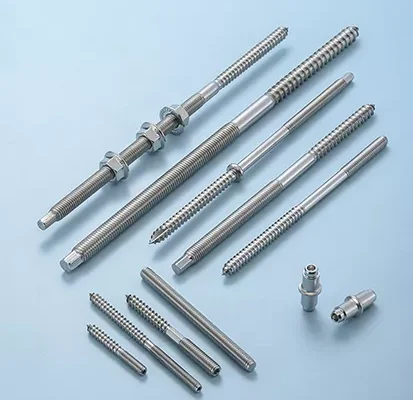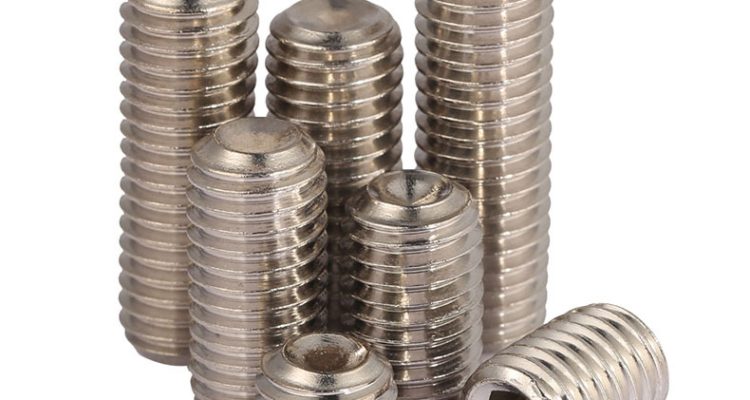
5 Types Of Screws And Their Best Uses
Tek screws are ideal for metal roofing, wood screws for furniture, machine screws for electronics, sheet metal screws for HVAC, and drywall screws for securing drywall to studs
Tek Screws
Tek screws, or self-drilling screws, are designed to do this without the need for a pilot hole – this is especially important for assembly in manufacturing and construction environments. It’s a pen point style, just like a drill bit, and in different sizes and different lengths to span the thickness of a material.
Best Uses of Tek Screws
Tek ScrewsTek screws are typically used in the construction of metal buildings, and in roofing and wall panel applications. These are perfect for metal to metal, and also metal to wood, and they do not require pre-drilling. Which doesn’t only makes projects go faster but also saves a lot on labor costs.
Performance and Specifications
The size and material for which Tek screws are intended greatly determine their capability of drilling. Under normal conditions a Tek screw would only be able to penetrate up to 0.5 inches of steel which is generally within commercial building applications. The screw needs to be long enough to reach through the top layer and have at least three threads protruding past the material. This provides a secure attachment that holds up to environmental factors and wind-uplift.
Practice
The Metal Construction Association conducted a study comparing the pullout resistance and shear strength of Tek screws in steel framing applications. However, the results were that 5 mm 25 mm long screws offered the best yield, that was resistance up to 500 pounds pester it discouraged.
User Reviews and Feedback
Construction professionals often give feedback that Tek screws are fast to use. In one instance, a project manager at a roofing company claimed the company could get roofs built in half the time it would take with conventional fasteners by using Tek screws. And this time saving directly relates to cost savings on labor and ultimately overall project performance.

Wood Screws
Wood screws are made only to fasten wood. The screws are fully threaded with a sharp point and serrated threads for reduced drive torque and spinout, and pullout and splitting are prevented between the sharp threads and the coarse threads.
Characteristics And Measures
Different length and size of wood screwsHigher And Lower Gauges It takes different lengths (from 1/4 inch to 6 inches) and gauges (from #0 to #24), having many uses that can go across both thin and thick wood materials. The length, and gauge of the screw are what will affect how much weight the screw will hold and the overall wood structure.
Optimal Uses in Woodworking
Wood screws are used primarily for woodworking projects such as cabinetry, furniture and general carpentry. They have been designed to help carve strong joints in wooden pieces without damaging them. A typical example is the #8 gauge – 1.5″ wood screw that is used in cabinets for its size-to-strength optimum: Not to big as to split the wood, yet strong enough to hold.
Performance Specifications
Wood screws are frequently evaluated on the basis of the force they can resist withdrawal from timber connections to provide structural integrity. A #10 gauge wood screw can withstand approximately 100 pounds of wood pullout in pine wood, which is sufficient for most indoor woodwork tasks. The resistance you feel changes with the wood type, woods high in dense have greater resistance.
Technical Data and Guidelines
Example: The American Wood Council states that a #10 wood screw into hardwood should have a 7/64-inch pilot hole, slightly smaller than #10 screw at.190″. This helps prevent brutish lunkheads like me from overtightening the fasteners and apparently reduces stress cracks because the threads can burrow deeply into the wood before binding up.
Compliance and Industry Standards
Industry standards should outline the way wood screws must be: manufactured, the design of the threads, and the materials of the fastener (the materials for wood screws are usually specified by the more generic standards of the American Society for Testing and Materials [ASTM]). These guidelines help protect the screws against moisture exposure and temperature variations so the screws can provide the necessary performance when in use. Strict testing is used to confirm compliance with these standards as well as the assurance that every batch of wood screws can be relied upon for DIY projects and professional construction tasks.
Metal Screws
Machine screws, or metal screws, are designed to hold metal parts together with very tight tolerances and are incredibly strong given their size. They feature an even threading, available with a selection of head types (hex, flat, or pan) and come in multiple integrations.
Types and Specifications
Metal screws can be purchased in a wide variety of sizes and lengths from 1/8 inch to 3 inches. By comparison they are usually constructed from steel, stainless steel, or brass for resistance to corrosion or heat. The bigger the diameter and the higher the length of metal screw, the heavier the load it will lift, the thicker the metal, which it can properly join.
Ideal Applications
The screws themselves are in widespread use for applications ranging from the automotive industry to the electronics industry, where producing reliable, strong joins is critical. For instance, in a car engine, stainless steel metal screws can be used to ensure the parts do not get loose under high temperatures and vibrations.
Key Performance Metrics
Typically, metal screws are also rated by tensile strength and torque values. So a #4-40 metal screw used in electronics can withstand a tensile load of 80,000 psi (pounds per square inch) as an example. With the right torque, or how tight the screw has to be twisted, a bolt can sunk in place without any threat of the threads stripping under too much force.
Installation Techniques
Correct method of installing metal screws is to make sure you pre-drill pilot holes with the same ID as the core of the screw. This preparation prevents the material from cracking and makes it easier to insert the screw later. A pilot hole is not strictly required in wood for a #4-40 screw, but it does encourage a snug fit; you would use a drill that is approximately 1/32 smaller than the screw’s diameter.
Compliance and Standards
Metal screws need to comply with standards like those of the American National Standards Institute (ANSI). These standards detail the materials, dimensions, and tolerances necessary for screws to be trustworthy in high-pressure applications. This assures that metal screws that comply with ANSI standard can be used across similar applications without the risk of incompatibility or failure.
Sheet Metal Screws
Sheet metal screws have sharp threads that cut into sheet metal, plastic or wood. They are available in different types and are especially used for fixing different materials without a nut.
Types and Characteristics
Now, Sheet metal screws come in flat, oval, or pan head styles, typically used when countersinking is needed or simply more aesthetically pleasing when fixing the visible product. They can of course be manufactured from a broad range of steels / stainless steels / aluminum, with consequent differences in strength levels and corrosion resistance. Diameters will typically range from #4 thru #14 with lengths as long as three inches.
Optimal Uses and Applications
Applications – Commonly used for HVAC systems, metal cabinets, automotive bodies. This ability to penetrate and start a fastener in light gage metal without a pilot hole makes them invaluable in industries like production builders. For example, #8 size screws in HVAC installs are often used to hold ductwork in place, gripping into thin metal without pre-drilling.
Performance and Load Capacity
Typically, the performance of sheet metal screws is judged by how well they are able to endure pull-out and shear forces. So, for example, a #10 sheet metal screw can usually withstand an extraction force of about 200 pounds in 20-gauge sheet steel. They are perfectly good for fastening steel for a metal roofing solution that requires a high level of wind resistance.
Installation Best Practices
Choosing the right drill point size is of utmost importance while installing sheet metal screws to enhance their performance. For instance, a #3 point is good for drilling metal which is 0.25 inches (6.3 mm) thick. By having the correct match of the drill point to the screw size this will avoid damaging the material during installation.
Standards and Compliance
Sheet metal screws must be of the standard type as determined by the American Society for Testing and Materials (ASTM) These screws meet ASTM specifications to ensure they are strong enough to handle specific loads. These standards are kept by manufacturers as a safeguarding measure for durability, and a matter of safety in structural applications.

Specialty Screws
Specialty screws are designed for applications beyond the capability of standard screws. This includes both materials that have specific installation requirements and situations in which the environment places unique demands on performance.
Different design and material variations
Screws with new and specific applications may be made from titanium, bronze, plastic, or other materials to best suit their intended purpose. For example, titanium screws are widely used in the aerospace field because they are so strong and yet lightweight. Their construction may involve atypical driver types such as Torx or hexalobular internal drive to maximize torque-to-turn.
Key Applications in Industry
Specialty screws are commonly found in the electronics industry for obvious reasons – the precision. Micro-screwsAll the way down to #000 the screws used to assemble the smallest gadgets are called micro-screws, like your laptop, your smartphone or your camera. The screws are often produced from high-quality stainless steel to make them resistant against corrosion and to assure a longer life.
Performance Metrics and Testing
Specialty screws are tested on various parameters such as tensile strength, corrosion resistance, and thermal stability. An example of this: screws for installation in a marine environment are subjected to tests in the laboratory to determine how they cope with saltwater corrosion. The performance of these screws can be benchmarked against the ASTM F593 standard which covers stainless steel bolts, hex cap screws, and studs.
Installation Techniques
Specialty screws need special tools for installation By preventing tampering, such as with security screws, which require installation with special bits. Their screws resist unsanctioned disassembly, essentially for locking up safely in secure areas where inmates or transit workers might be using them.
Compliance and Certification
Specialty screws are often required to meet high standards established by international organizations like the International Organization for Standardization (ISO) and the Society of Automotive Engineers (SAE) to guarantee success. Certification guarantees that when these screws are used in the applications for which they were designed, they will not fail.



